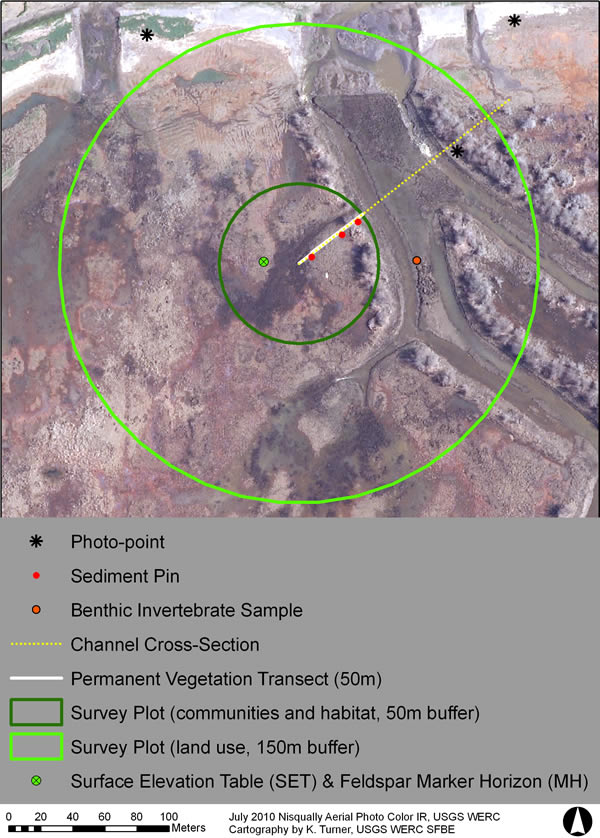Design: Monitoring Stations
Monitoring stations are locations within the project site where several biophysical samples occur within a small area. Monitoring stations are cost-effective, time-efficient resources because they reduce travel time across the project, minimize access procedures and disturbance to sites, and facilitate the ease of relating complementary datasets during analyses. Each monitoring station typically represents a site of intensive monitoring. When selecting new monitoring stations, consider accessible locations that are representative of the habitats and conditions (e.g. tidal marsh, mudflats, elevation and salinity ranges) present at the study site. Monitoring stations should include habitats and conditions that are relevant to those monitoring questions being examined (e.g. vegetation colonization, sediment accretion, fish/invertebrate/bird use). Within these criteria, random or deliberate stations can be chosen. When possible, baseline sampling locations should be used as monitoring stations. At the minimum, monitoring stations should include elements of the following monitoring categories: Elevation, Hydrology, Sedimentation, Habitat, and Fauna. Please note that some monitoring questions may require greater spatial coverage across the site than provided by monitoring stations (e.g. census bird surveys, elevation mapping).

